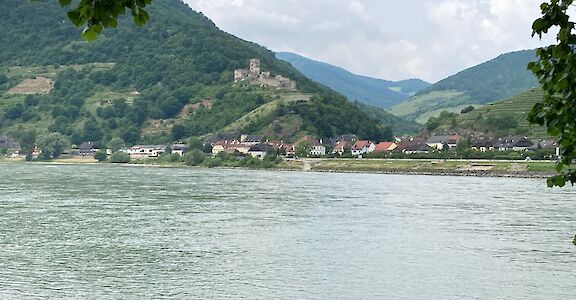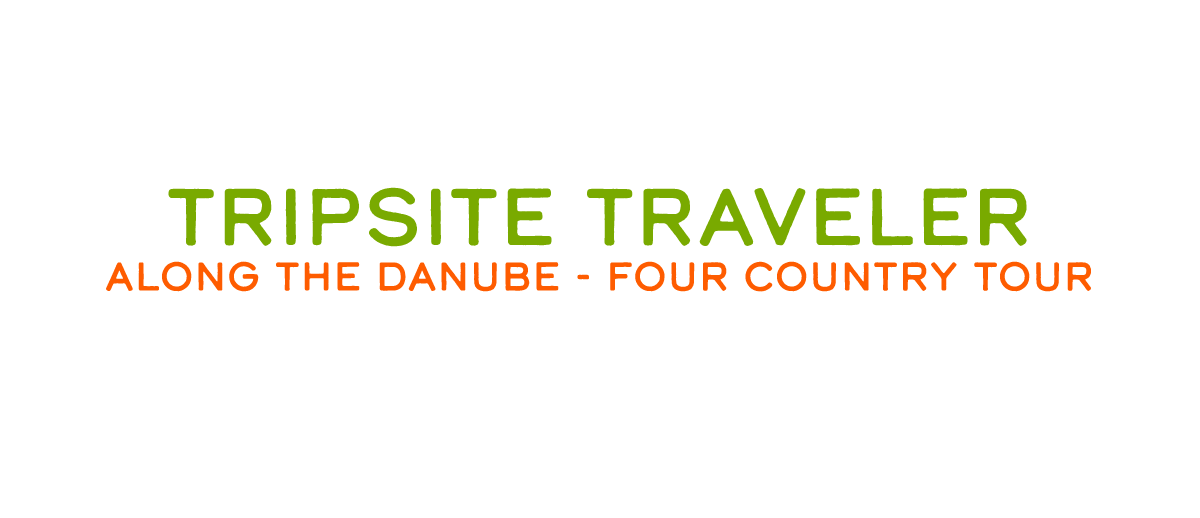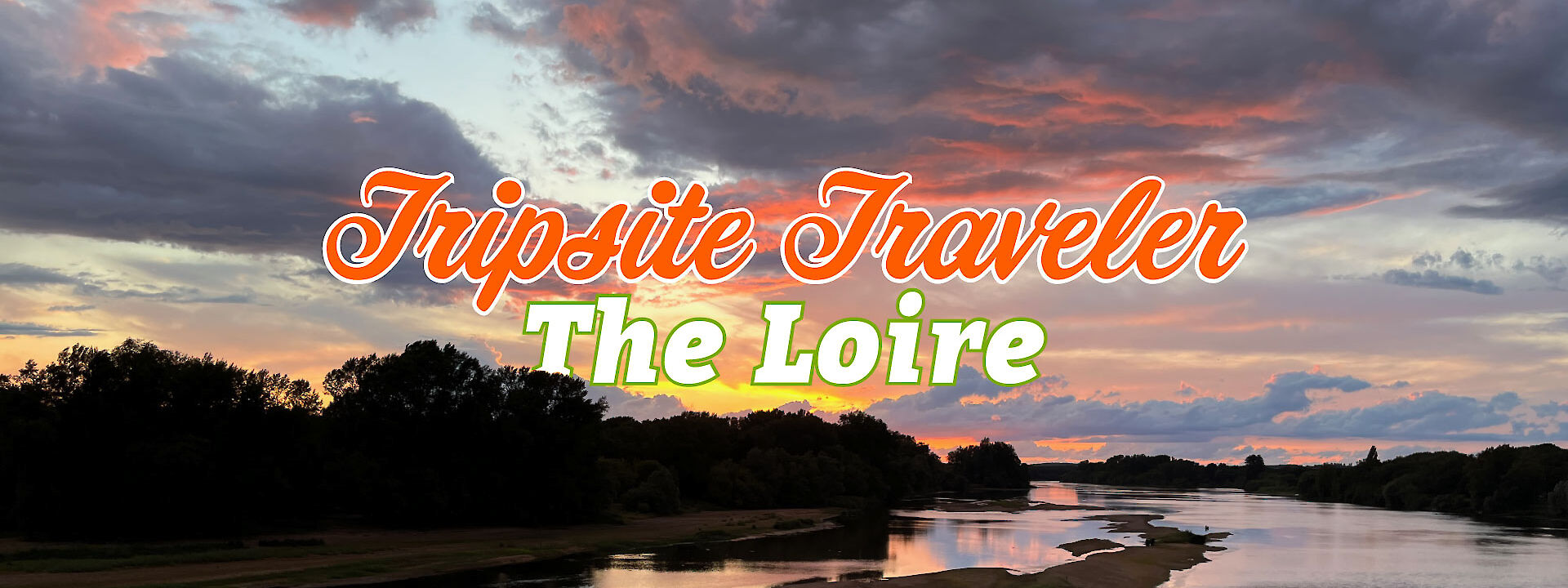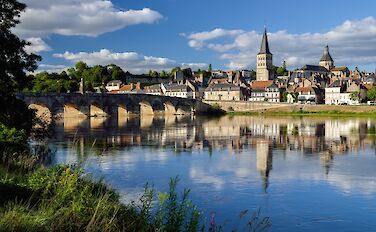The Loire: Land of Châteaus, Wine, and Great Cycling
This boat and bike ride down the Loire Valley, two hours south of Paris by train, combined everything that makes me happy as a casual-tourist rider.
It was a delightful sport experience – mostly easy and flat but with some hills to boast about afterward. It was through beautiful nature. I especially liked the runs through the shady tunnels created by parallel trees through woods and along canals. We covered the distances, mostly between 40 and 50 kilometers (25 and 30 miles) a day, at a party pace with an average of three rolling hours a day.
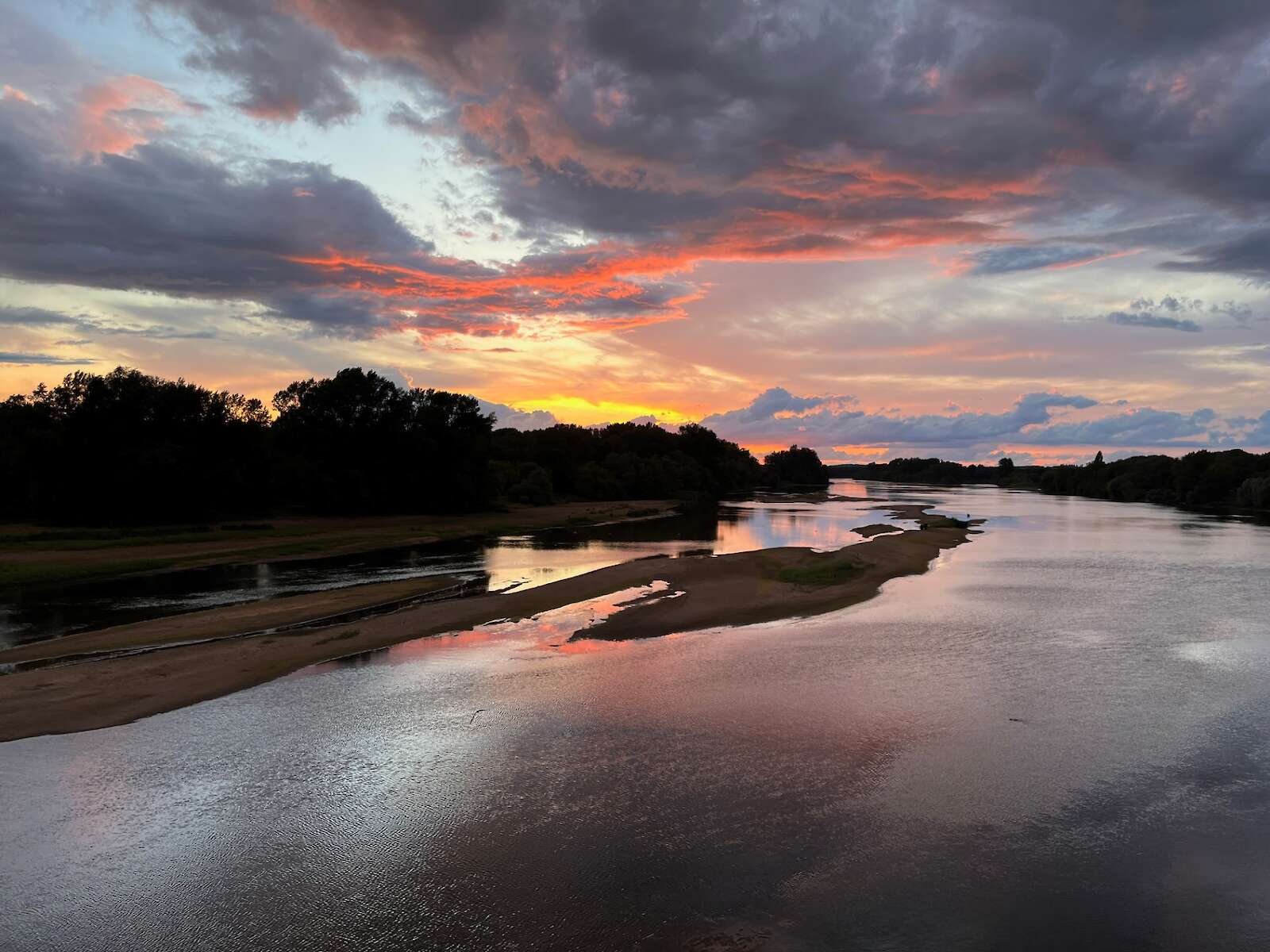
While the famous, luxurious (and touristy) castles of the Loire – like Chenonceux and Amboise – were west of our starting point (Briare), the châteaus and churches that we visited in the smaller cities along our southbound route were right-sized for cycling. We roamed through castles that were real families’ homes until recently, without “do not touch” signs on every table. The churches remain houses of worship but are mostly symbols of cities’ and town’s pride and identity. Bells tell residents the time.
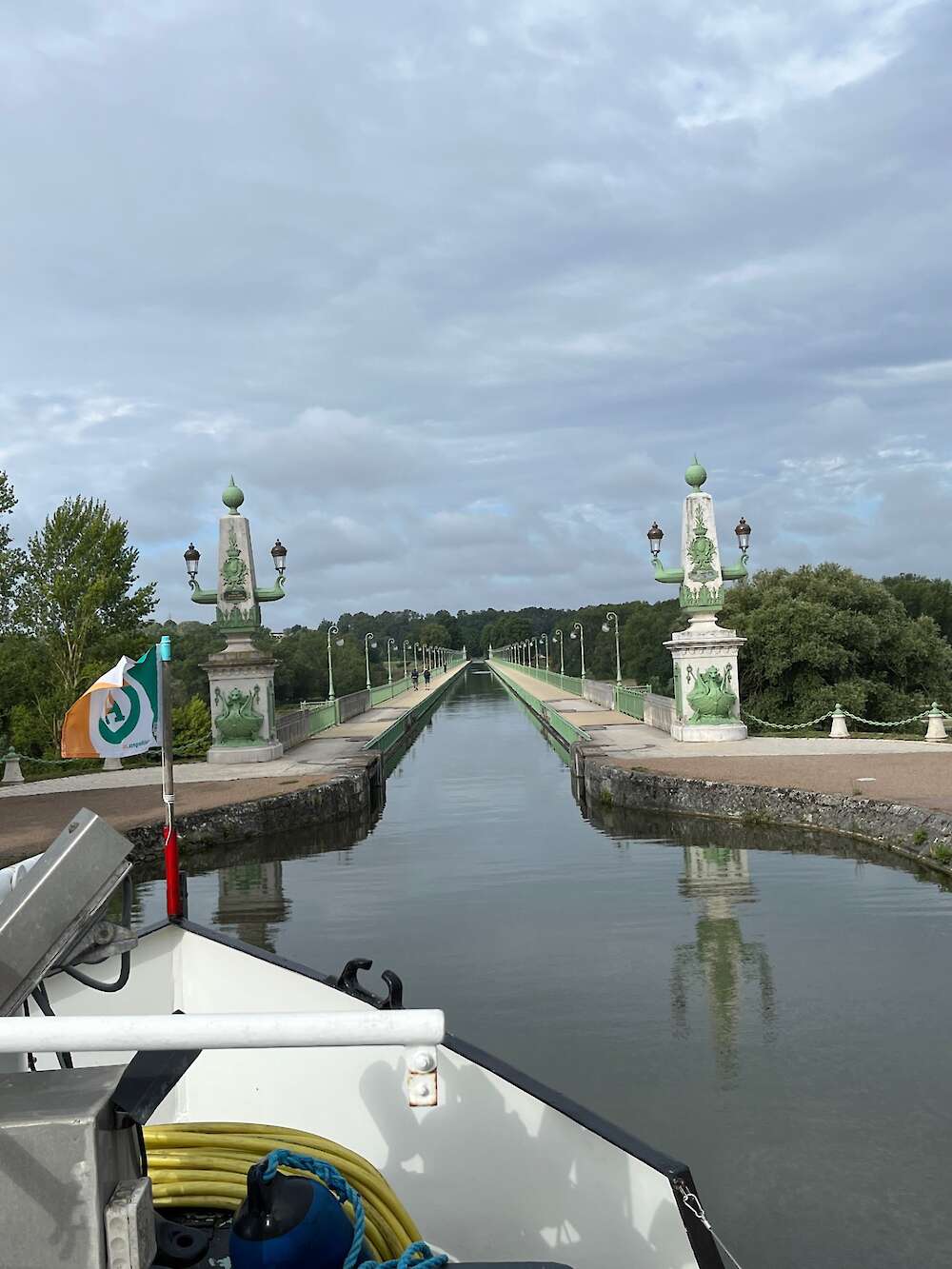
Some people, including my sometimes-iconoclastic brother, joke about seeing “ABC” – “another bloody church” (or castle) – but these were personal, almost intimate visits. When we took breaks in some of the dozens of immaculate little towns along our way, we’d ask for the church key at the mayor’s office, conspicuous for its large Mairie sign, flags, and Liberté, Égalité, Fraternité slogans, and let ourselves in.
Some highlights on the tourism side:
- The “Canal Bridge” (Pont Canal) at the very starting point of our trip. It’s an amazing bridge, essentially an aqueduct high above the Loire River that carries enough water that boats as big as ours can sail across. (Days 1 and 2)
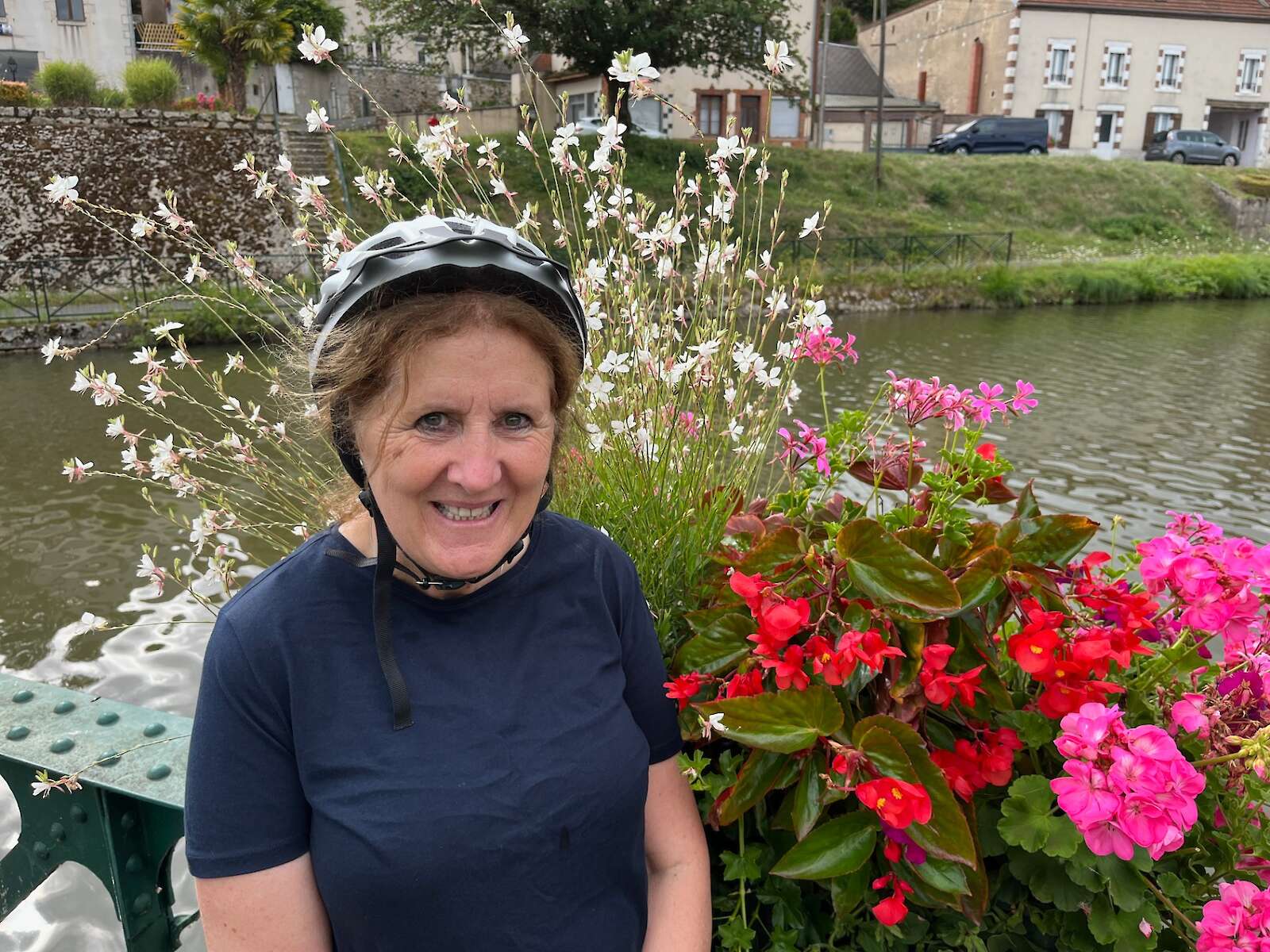
- The Château de La Bussière, where we roamed through a massive home, with a moat, and its expansive gardens of flowers, vegetables, and bushes. (It was extra fun that a member of our group was a horticulturist!) (Day 2)
- The oldest part of what today is the Château de La Bussière was built in the 12th century and later underwent huge expansions and overhauls. The current building was opened to the public in the 1960s, with furnishings from across the centuries.
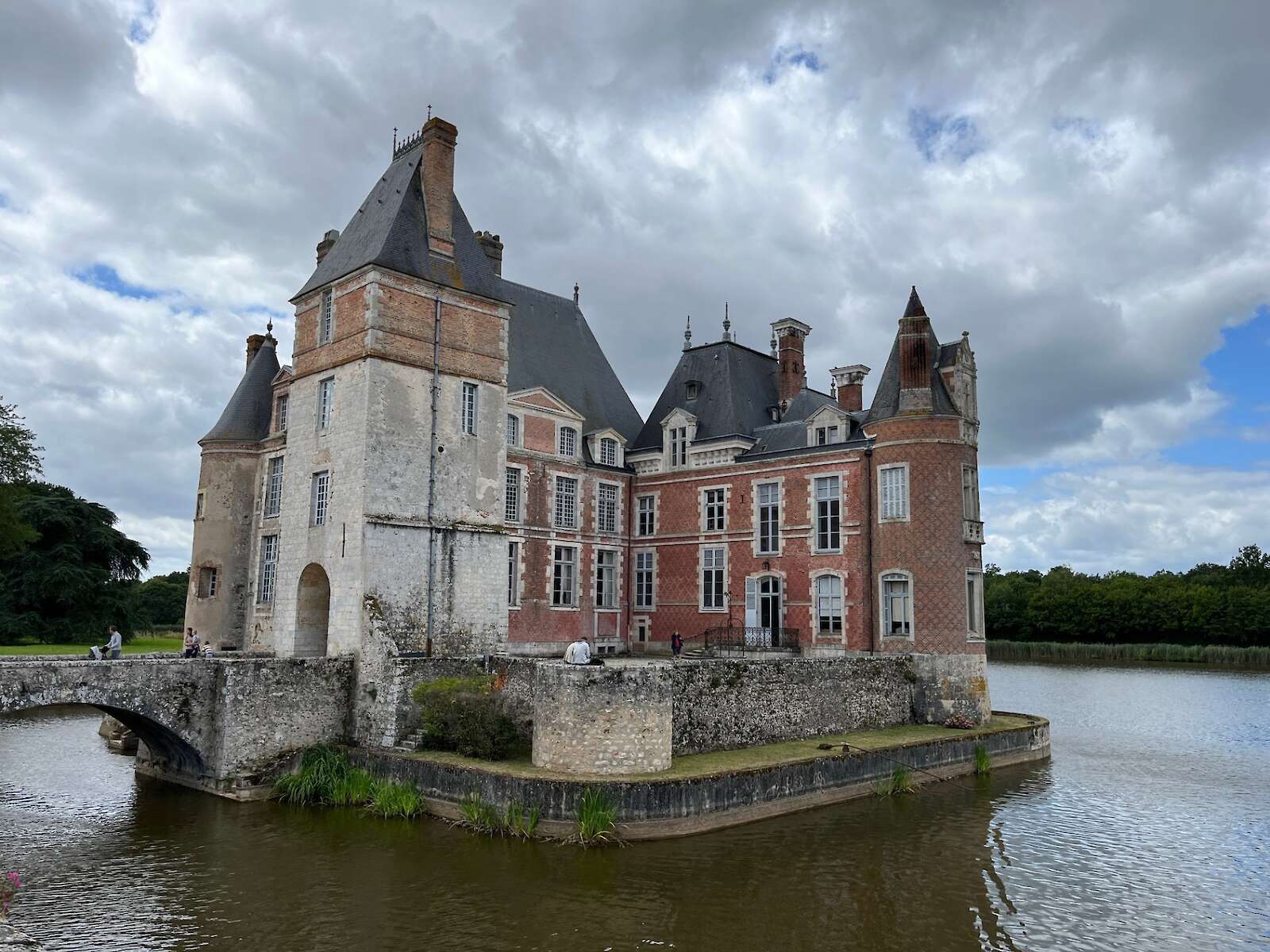
- The town of Gien, famous for its glazed ceramic ware. A plaque on the wall of the cathedral atop the hill overlooking the city documents that Joan of Arc visited four times in the year 1429 (two years before she died). (Day 3)
- A wine-tasting in the town of Sancerre, a proud regional capital of wine production. According to my GPS, the hill into town was the biggest of our trip – climbing 135 meters (441 feet) over 2.7 kilometers (1.7 miles) – so I felt that I deserved more than a few sips of wine, but I refrained because we had a major downhill sensation ahead on the other side of the city, where our boat awaited us. (Day 4)
- A farm – whose name translates as the Farm of the Black Beast – specializing in raising super-cute goats for their milk, from which it produces amazing Crottins de Chavignol cheeses – at a tiny fraction of the price we’d pay for imitations back home. (Day 5).
- The Parc Floral in Apremont-sur-Allier, with stunning gardens surrounding medieval-style houses so beautifully maintained that they looked like a movie set. (Day 6)
- Magnificent châteaus, which we viewed from outside, that have been converted into luxury B&Bs, and later enjoying un café beside the pool at one. And in Nevers, our destination, we enjoyed the Cathedral, majestic Duke’s Palace on the Square de la République, and shopping streets. (Day 7)
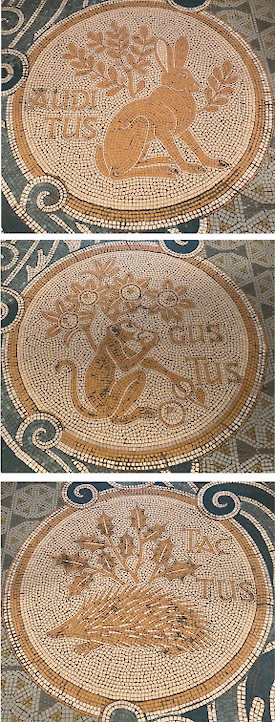
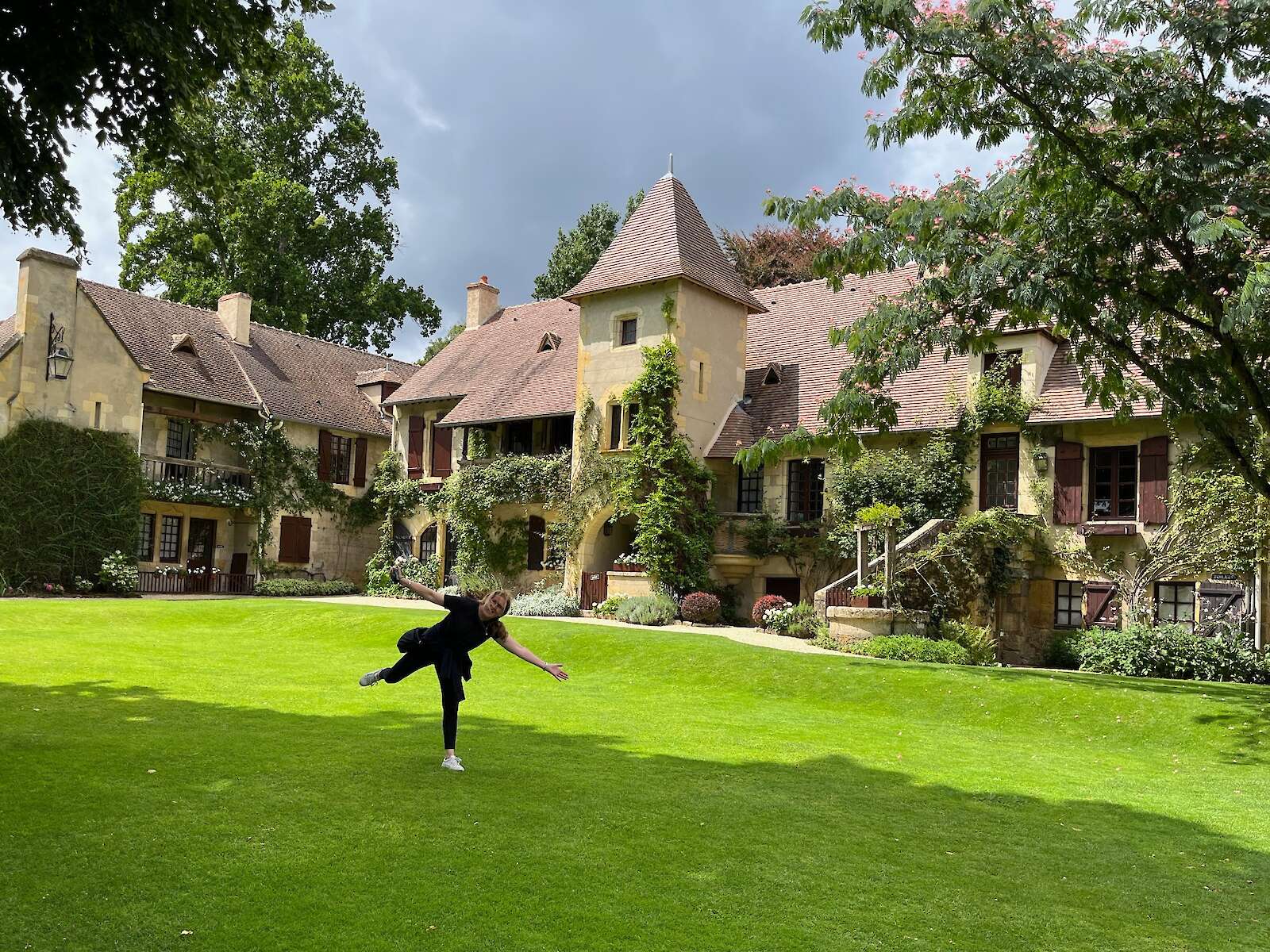
I’ll probably remember the cool moments longer than the landmarks, however.
- As on previous rides in France, I loved hearing the happy Bonjour!! with which we were greeted everywhere we went.
- Being the “baguette man,” sent on my bike before breakfast to fetch bread that was still slightly warm when it hit the table.
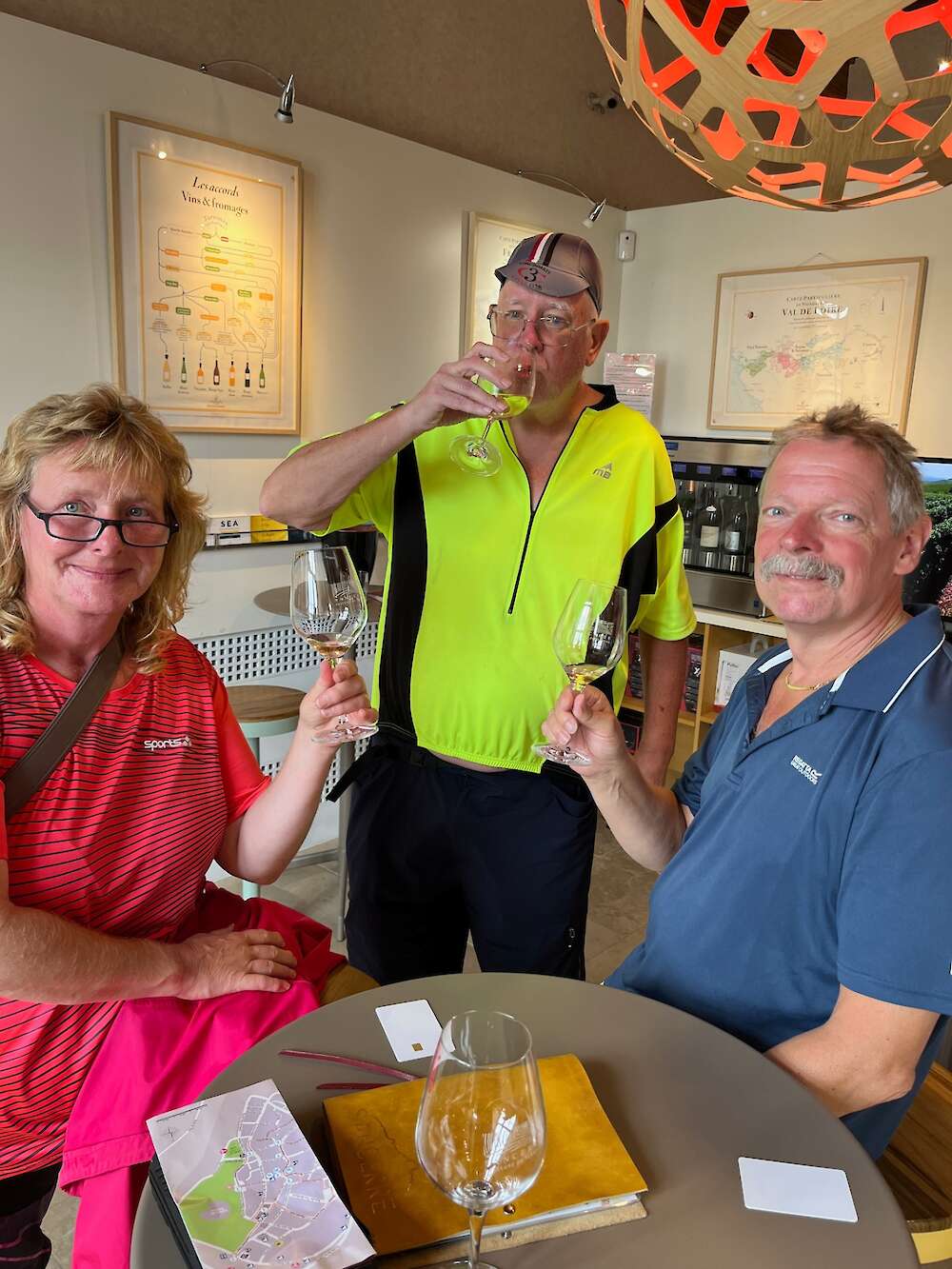
- Enjoying an exquisite apple tart from a corner bakery (along with the ham and cheese sandwich I packed on the boat after breakfast) while sitting in the main park in the town of La Guerche.
- Appreciating the warm welcome, including from a man who could easily be mistaken for an old grump (appearances deceive!), at a roadside diner that let us commandeer the dining room after we’d been riding in several hours of wind and rain. (A French fry never tasted so good!)
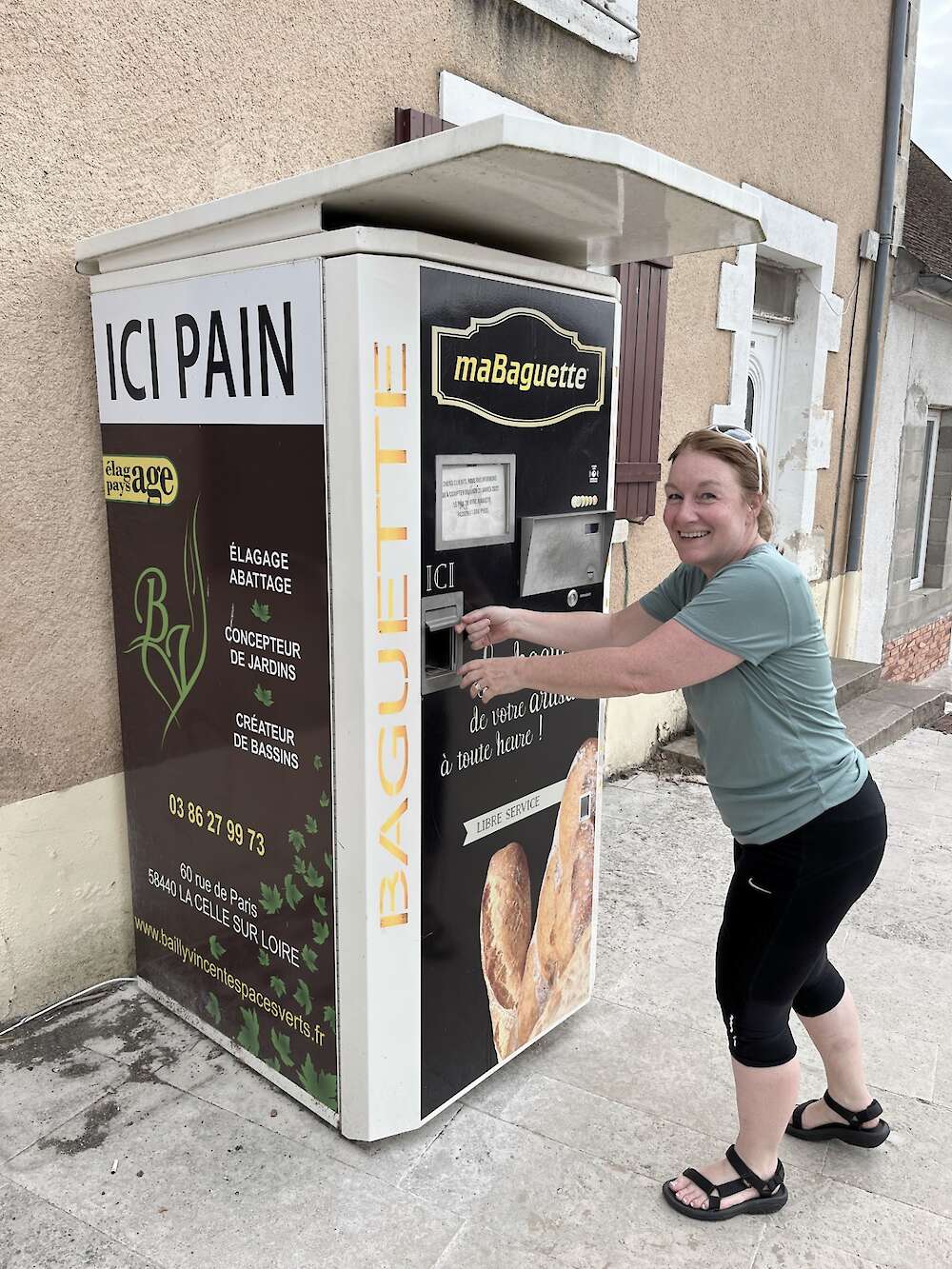
- Marveling at the tropical-type storm that blew over the rustic gothic church in La Charité.
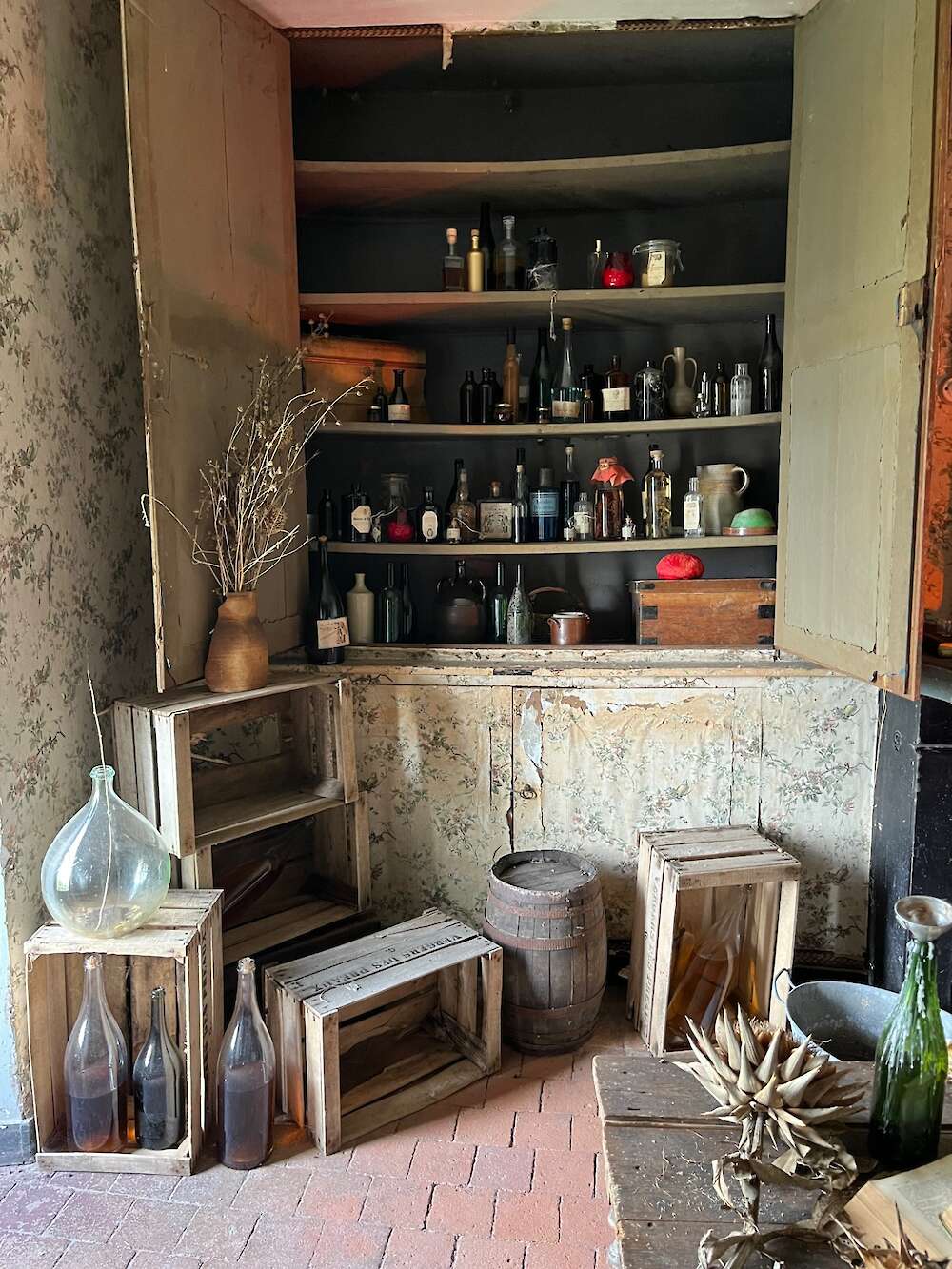
I don’t want to sound too corny, but these experiences – which are best savored on a bicycle – inspire me. On these trips, we leave our comfort zone and see a different reality. We achieve a goal and savor the freedom of cycling. We realize that we dry out (and don’t shrink) after riding in torrential rains. And … we feel deep pride.
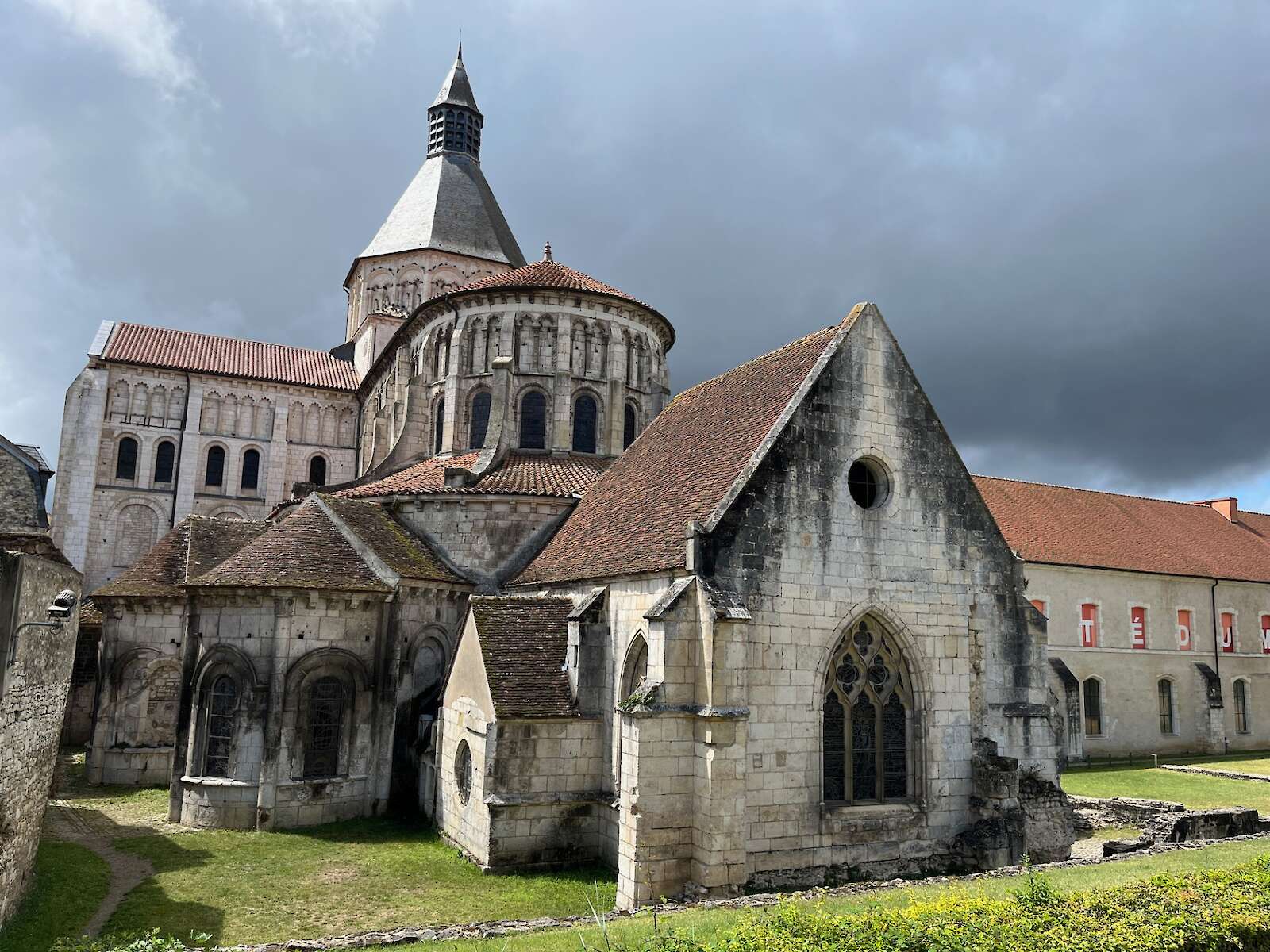
My brother and I have done a bunch of cycling tours over the years. All have been unique and good, but we’ve found that the bike and boat variety is our favorite. It’s not just because we unpack and pack our bags only once (a significant convenience). It’s also because adventure awaits us right off the boat ramp each morning, and a warm shower and cold drink awaits us at the destination. Even more importantly, it’s because of the opportunities for greater interaction with our group.
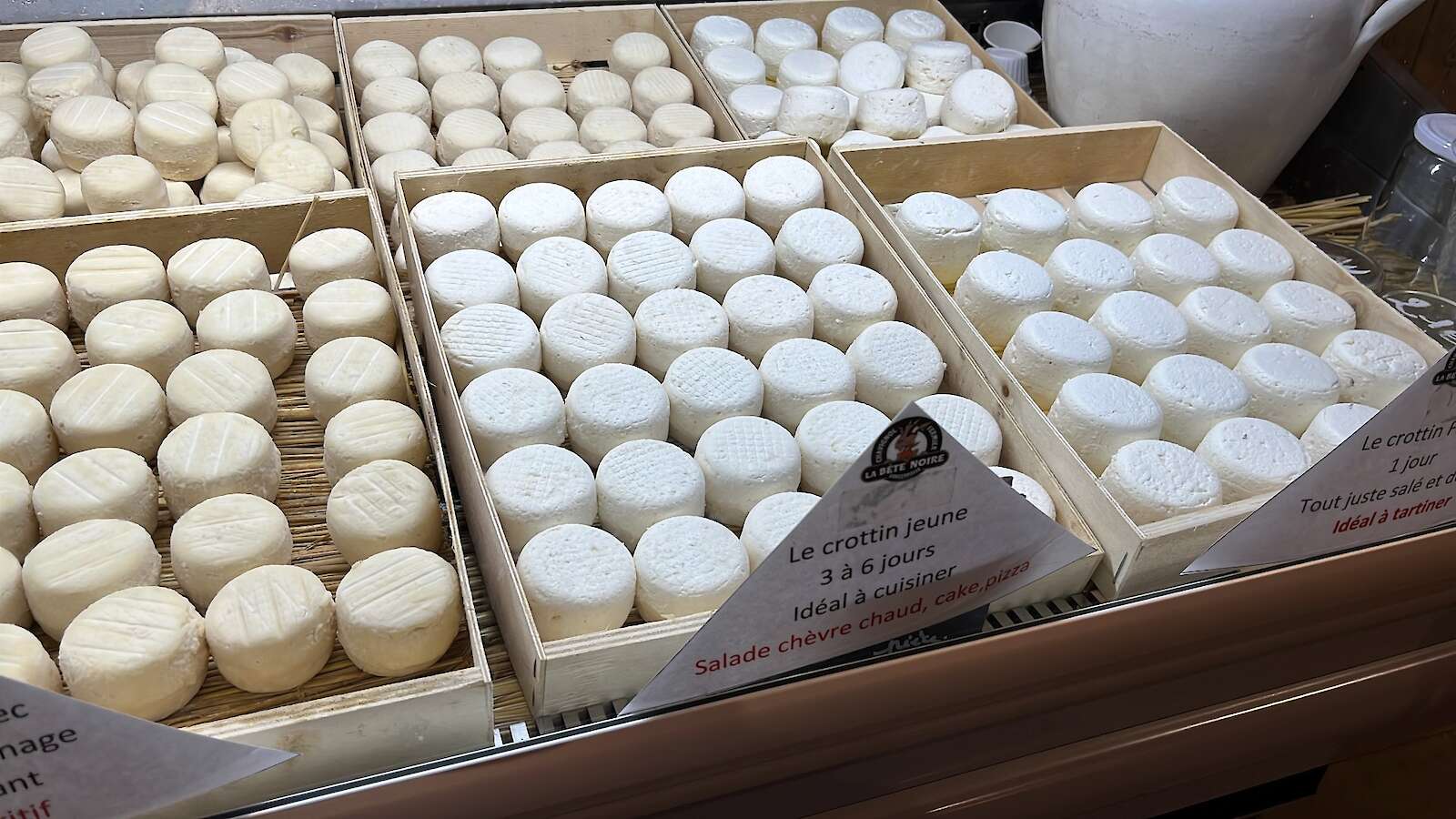
In fact, the social experience of a trip like this becomes a highlight of the trip for almost everyone. Even people who might see themselves as shy or reserved, and even folks who don’t do the daily rides (and stay on the boat), get the spirit.
It’s fun to watch how disparate people – we were two Americans, four Australians, two Germans, one Canadian-German, and one Italian (Viva Italia!) – meld into a traveling group that respects all kinds of travelers. With our fantastic guide (Dutch), ship captain (Belgian), first mate (Spanish), and chef (American-German) we showed how the world could be a better place if we all took bike trips.
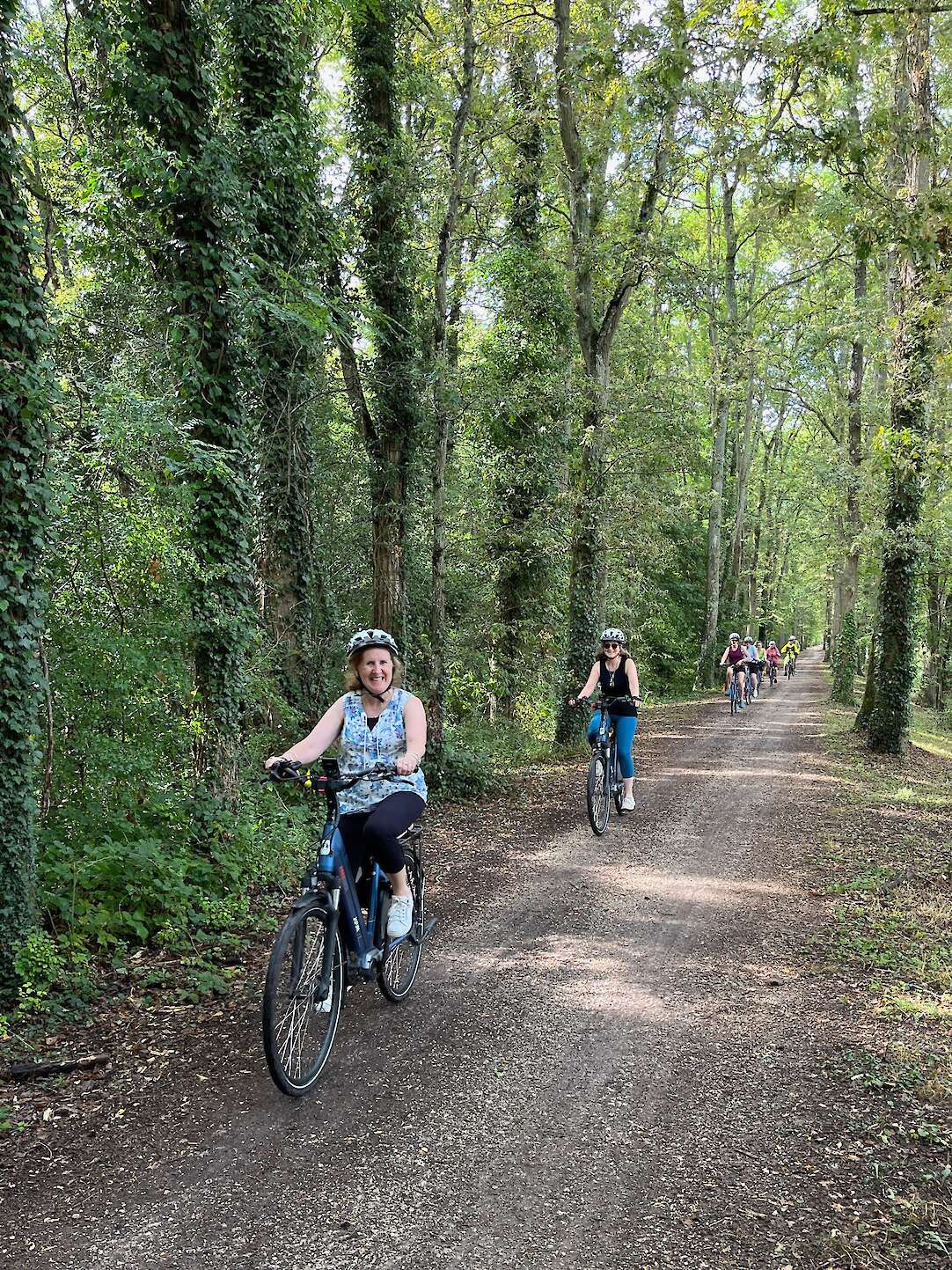
After-dinner conversation is key, not just on this trip. We talk about our countries … previous trips … food … and cycling. We compare notes on cycle tours, discussing issues such as whether we prefer guided or unguided tours. Most guides welcome you to run ahead and wait for the group at a pre-agreed location as long as you have a communications plan in place. (Several of us did that one day, which turned out to be just fine because no one else got to see that I had to rest two times while climbing a hill.) Our guide, Annita, had done the route with groups before and alone once (bike-camping) so she could better steer us and brief us on possible modifications. I’d never had such a dedicated guide before.

We agreed, hands down, that e-bikes are a blessing that enables good cyclists to ride without fear of running out of fuel. A guided ride like ours is always “no drop” – a “sweep” who volunteers from among us makes sure that no one is ever left behind – but an e-bike guarantees that no one ever feels that they’re holding back the group.
We agreed (even our Italian friend!) that Chef Jen’s tiramisu was top-notch; that Captain Luc’s piloting of the Clair de Lune through canal locks with only inches to spare on port and starboard sides was genius; and that First Mate Francisca’s smile lit up the whole dining room.

We agreed, most importantly, that we loved the Loire (if not one day’s rain showers and wind), we enjoyed each other’s company, and we’d be looking for new bike adventures in the future.
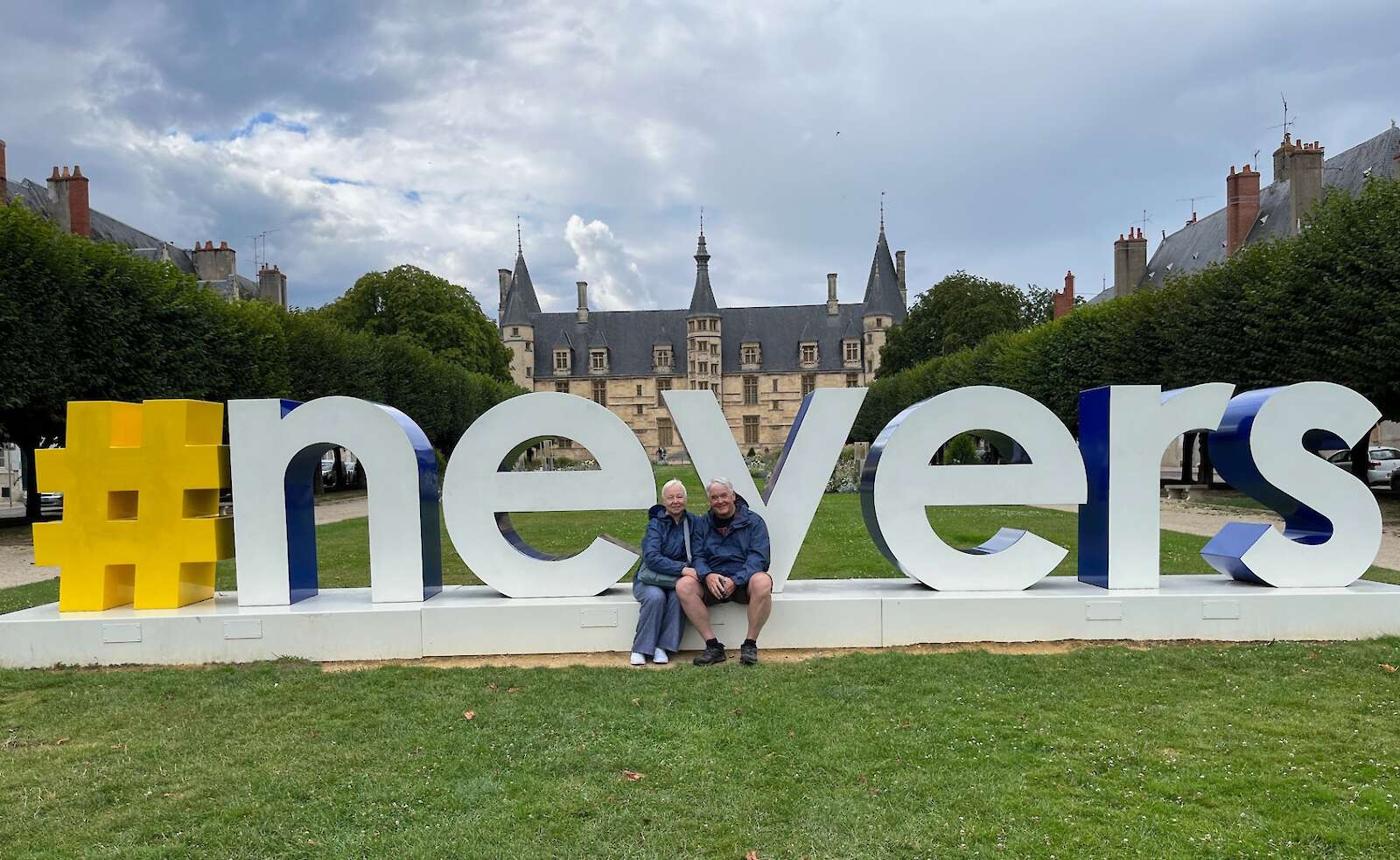
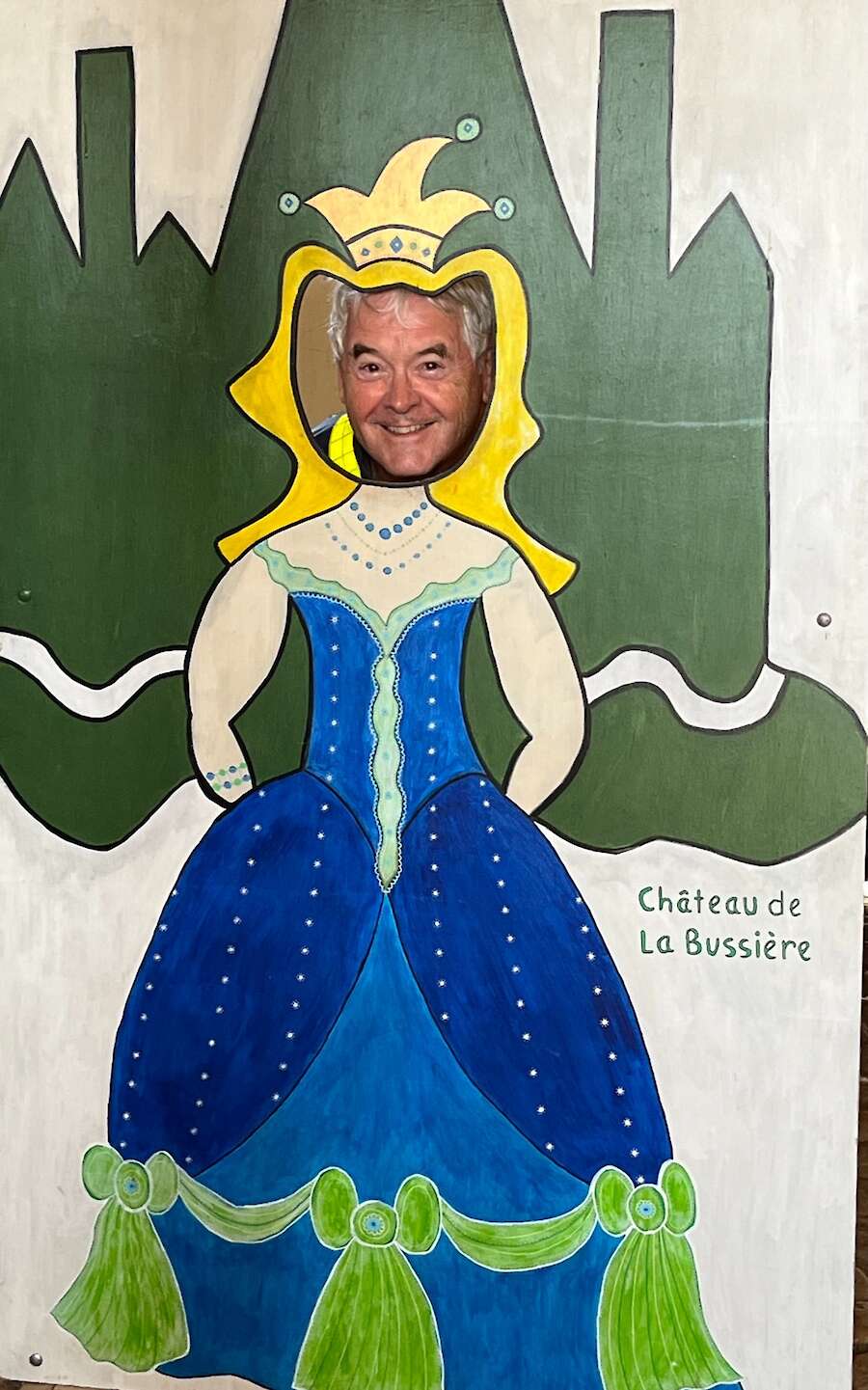
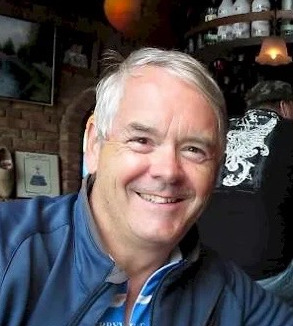 | Fulton Armstrong worked in the U.S. government for many years and currently teaches at the American University and Syracuse University program in Washington, DC. |
Comments
mike armstrong
3 months ago
Verified Reviewer
Kevin Armstrong
5 months ago
Verified Reviewer

